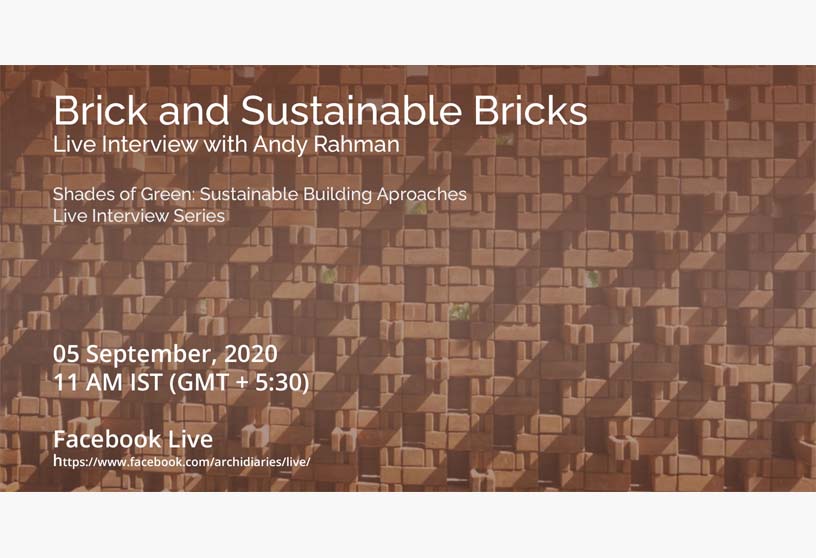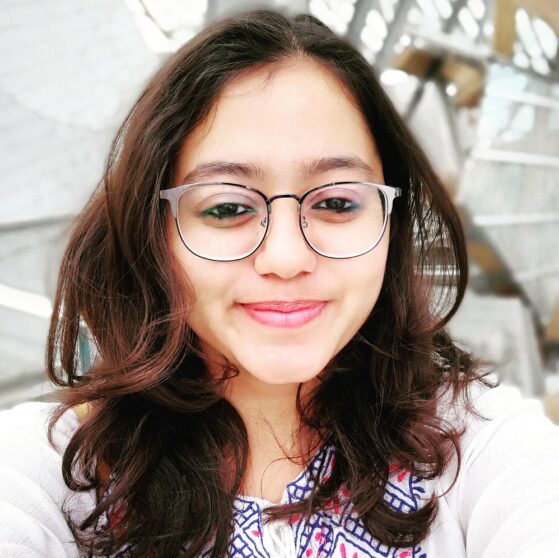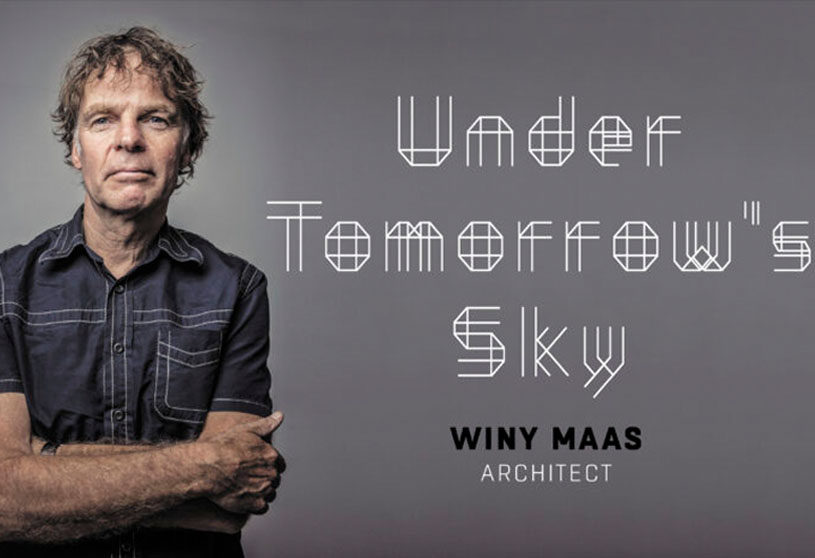In the fifth interview of the ongoing series of Shades of green, we present to you a talk between architect Andy Rahman from Indonesia and Mohammed Ayazkhan. This interview series is a place where we talk to various practicing architects about sustainability and its different approaches in architecture and design.
Andy officially established Andyrahman Architects in 2006 and has done more than 300 works spread throughout Indonesia. His works include private residences, offices, hotels, rectorate buildings, school buildings, housing estates, homestays, boutiques, banks, schools, car showrooms, hospitals, mosques, boarding schools, research buildings, boarding houses, shop houses, etc.
Through this presentation we see Andy’s journey of exploration, initially, using brick with the learnings of ancient and vernacular buildings, and later re-evaluating the use of brick as a sustainable material. With the presentation, we see his efforts in uplifting the local craftsmen by reviving the skills and exploration of tectonics with their help.

At the beginning of the presentation, Andy talks about the origin of brick since the neolithic period. The use of brick in Indonesia can be dated back to the fourth century. He shows the architecture of temples from Majapahit Kingdom in East and West Java like Wringin Lawang temple and Bajang ratu temple, and the use of bricks, without cement. In showing us the documentation of the building techniques of brick in these temples, he explains to us one such technique called the Kosod brick technique, which allows the bricks to be joined to one another without any cement mortar.

Andy introduces to us his project Omah Boto, a project where everything from the doors to stairs to the facade is made by considering a brick as the module, hence getting the name Omah boto i.e. Brickhouse. The site of the project Omah boto, was near the pari temple and summer temple of Nusantara. They found a village where the entire population of the village worked as a brickmaker. This helped Andy and his team in understanding the architecture of mojokerto and exploring it further. The brick that was finally used in this project was MRH brick, which had a unique capacity of hiding the cement mortar when it was laid, and hence helped Andy achieve tectonics close to the temples of Nusantara. He shares with us his simple yet unique technique sets of drawings that were shared with the craftsmen to make these patterns in brick. The client in this project had envisioned his house to have the character of Indonesian temples, Andy responded to it by using brick patterns in various ways on the floor, ceilings, and walls.
Further in the presentation, Andy shares with us the use of brick in his studio and other projects. The prominent use of brick in his project, he says is to preserve the skill that has been in Indonesia since ancient times.

“The reason we use MRH or local bricks as I am trying to preserve the brick techniques that have been used since the 14th century. If we don’t preserve this, the local craftsmanship will disappear and the craftsmen will also have to change their profession because there is no architect or people who use brick nowadays.”

After using brick extensively in his projects, Andy tells us about his self-reflection. At this stage, he questions whether the brick we use today is a sustainable material. While looking at the current carbon footprint he concludes that there is a need for a developed future brick that is more responsive to the environment and resources.
“So we are working on the two sides, first is to preserve the burnt brick and Mojosari and increase its value and on the other side, try to build a future brick, one that tries to be responsive to its environment for the future.”


So Andy takes us through his journey of creating a non-fuel brick using laterite soil that is commonly found in Indonesia and other parts of the world too. The character of laterite soil is such that when it is freshly cut, it has a soft texture, but becomes harder when comes in contact with sun and air. He goes on to explain how laterite soil bricks can be used in several other countries.

In working towards making a future brick, we see the relationship between Andy and the craftsmen and researchers. As a practice, Andy says that he gives equal importance to architects, craftsmen, and researchers. According to him, the exchange of ideas and collaboration is important, and it can only take place when we come to an equal level.

Andy introduces us to the Lego bricks that his team has developed. These bricks are made of laterite and not burnt. This brick is also three dimensional, which helps us create various spatial qualities. The inspiration for lego brick originally comes from the interlocking system of stone from the Borobudur and the Prambanan temples of Nusantara. This brick was further updated by creating holes in the, to give space for reinforcement that protects the building from seismic threats.

This type of brick was then used for Andy’s other projects like the Al-Fattah mosque, where the building is made using laterite non-burnt bricks.
Andy continues the research for a future brick by experimenting with making several types of bricks like fly ash, crushed plastic, bottom ash, and perlite bricks.

In the Islamic boarding school, Andy saw the opportunity to use fly ash brick as the campus was close to a power plant building from which the waste material will be used for the bricks.

Andy also shows Al- Birru mosque a project where they taught the community to make these laterite bricks and build a mosque on their own. This learning takes place at their workshop and office, from where the villagers return to their village, teach the community their learning and build the mosque together.
In Araya house, Andy has developed a parametric facade using bricks, made up of recycled materials in customized sizes. The recycled brick was made of waste terracotta tiles, shards of tiles of the roof, etc. In the making process, they visited the city of provakarta, where all the terracotta industries are present. They collaborated with the local craftsmen and industries there, to make this waste product into a new building material. They use this recycled material to explore different shapes and patterns of brick.

“In principle, we develop a DNA of architecture from the cell, and this cell is brick, and there will be many new possibilities with a brick..for example, we are working with a trapezoid brick that helps us explore a larger variety of tectonics.”

With this presentation Andy introduces the numerous possibilities one can achieve through experimenting with different types of soils and forms of brick.
In conversation with Ayaz, we understand Andy’s approach towards sustainability, through creating a contemporary expression learning from the tectonics from ancient Indonesian temples. The focus of Andy’s research is to create tectonics that helps the building in the hot and humid climate, usually using a secondary skin or elevating volumes of the building above ground for the building to breathe.
Andy’s work and his spirit to collaborate and keep the craftsmanship alive show us the much-needed passion for sustainability in the present time. His use of brick, while at the same time questioning it and developing better solutions for the future, set up a foundation towards sustainable solutions and the attitude with which we should approach it.
-By Prutha Barot
(23.09.20)




